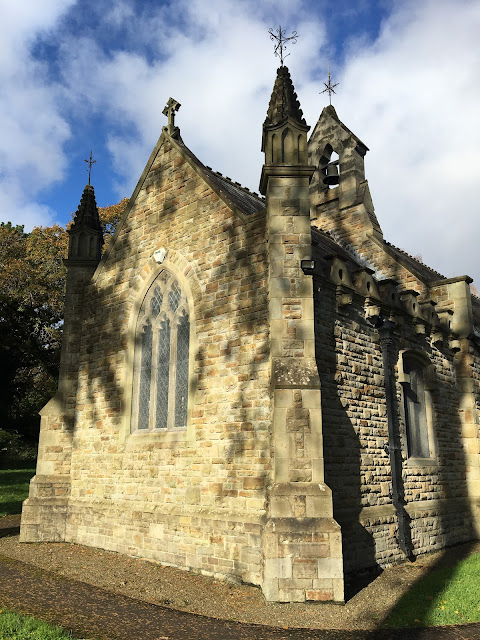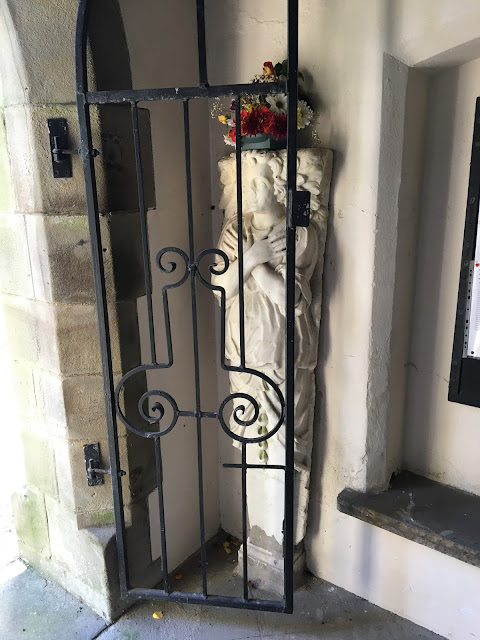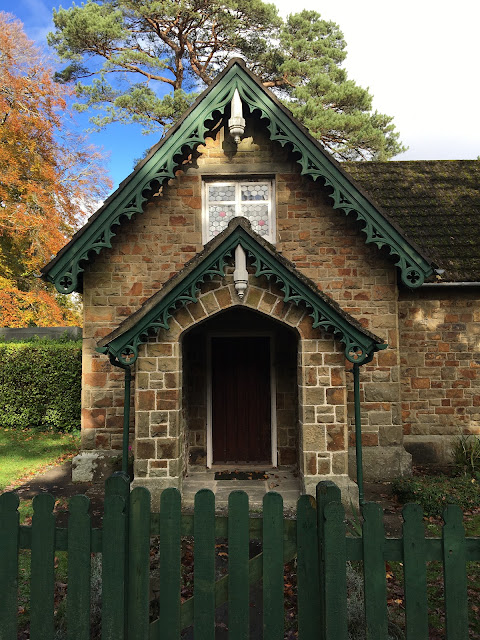A little trip out today across the Infernal City to Clyne Chapel and two cancelled buses. The poor woman standing in front of me at the bus stop had had to wait 40 minutes for a bus to finally arrive. Disappointment continued for the chapel itself was locked.
The chapel is quite an eccentric little building. It sits all tucked away on what was once the Clyne Castle estate. The castle is now part of the university and the gardens are owned and managed by the city council. The castle, originally Woodlands Castle and which dates in part to the late 18th century, was added to the portfolio of Vivian buildings in 1860 by William Graham Vivian, 2nd son of John Henry Vivian the industrialist and MP. The Vivians, who were originally from Cornwall, were among the richest of the city's copper magnates.
The chapel is quite an eccentric little building. It sits all tucked away on what was once the Clyne Castle estate. The castle is now part of the university and the gardens are owned and managed by the city council. The castle, originally Woodlands Castle and which dates in part to the late 18th century, was added to the portfolio of Vivian buildings in 1860 by William Graham Vivian, 2nd son of John Henry Vivian the industrialist and MP. The Vivians, who were originally from Cornwall, were among the richest of the city's copper magnates.
W G appears to have fancied himself as a bit of an architect and has been suggested as architect of the chapel, which built in 1907 in a rather mid-Victorian Gothic Revival affair but somewhat spiced up with somewhat wilful, if not in places, strange detailing, such as the oversized cresting on the exterior of the chancel. Some parts of it are better than others, and there is a general heaviness to the design that reminds me of the church architecture of Late Medieval Scotland. The only interior space I could access was the porch - in one respect pretty conventional except for the details of the capitals flanking the inner door and the eccentric presence of two slightly hermaphrodite looking herms guarding the outer door. Where are they from, I wonder. And what is their date? The eccentricity apart what is noticeable throughout is the quality of the workmanship. The Buildings of Wales volume on Glamorgan says that the church was intended to be both parish church and Vivian burial place. To supercede the Vivian Chapel at St Paul, Sketty?














No comments:
Post a Comment